5. The Shining (1980)
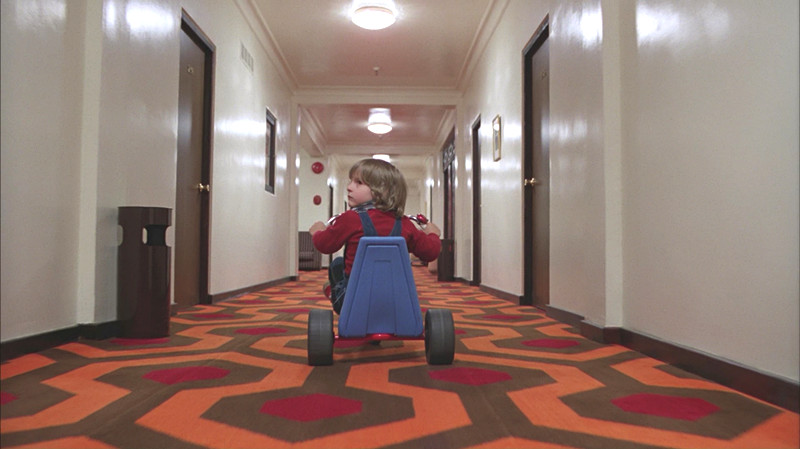
Stanley Kubrick’s 1980 classic “The Shining” undeniably has exhibited one of the most impressive and methodic camera works in cinema history. Intending to present its setting through the mentally twisted vision of the protagonist, this flick of stunning terror employs a fuse of splendid cinematography techniques that provide an ecstatic cinematic adventure.
The film essentially develops around Jack’s progressive mental breakdown, a core condition that is synthesized by the cinematographic artifices of the legendary American director. If you observe carefully, every frame entails optical elements that introduce a psychological aspect or reveal a prospective happening of the plot’s apparent narrative exposition. Every slowly developed long take lures the viewer into the visual manifestation of advancing illusions.
Despite the cinematographic innovation presented by Kubrick in this case, the narrative adequacy of “The Shining” is doubted by many viewers and critics. However, the camera movement plays a key role in the picture’s narration, operating as a guiding hand, psychologically and intellectually speaking. Such a phenomenal manipulating skill leads to a total comprehension of Jack’s insanity.
4. Touch of Evil (1958)
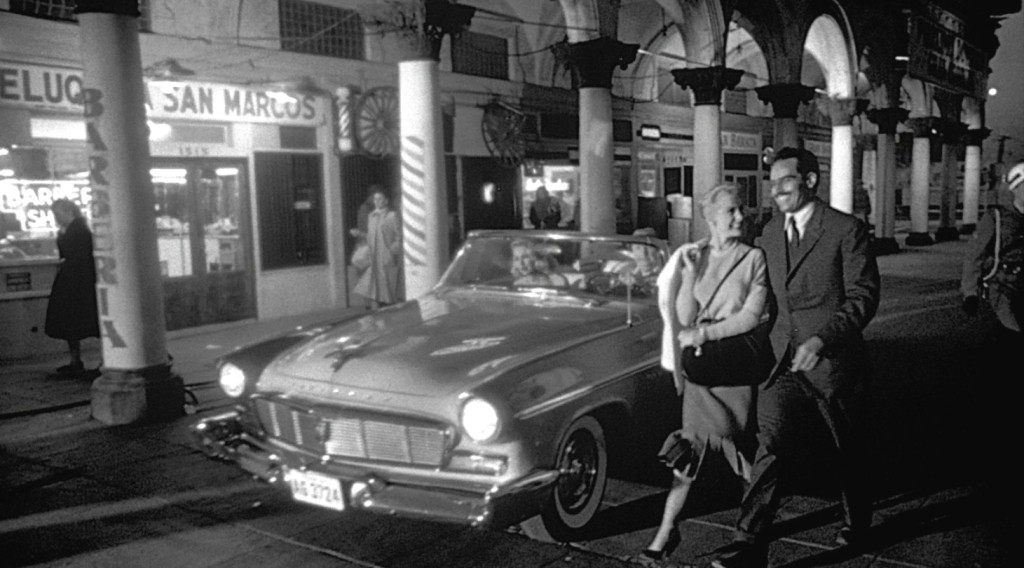
As far as Orson Welles’s cinema is concerned, one fact is certain: he knew how to sculpt a movie’s body in a unique, fascinating way. Almost every shot of his artwork is absolutely harmonically set, as if every optical detail was well-studied up front.
Almost every camera movement is fluidly evolved, describing a predestined course in space and time. Arguably, his first feature is defined by an unprecedented employment of lighting, camera angles, and perspective. His 1958 “Touch of Evil,” though, deserves an allusion for its magnificent camerawork.
Welles’s visual composition in this case is complete and calibrated, simultaneously serving aesthetic and conceptional scopes. Static takes highlight the dramatic quality of the evolving circumstances. Low-angle shots effectively showcase the terrifying strength of the projected characters.
Deep focus shots suggest a relationship between the objects appearing in the foreground and background, whereas flexible camera movement that develop in parallel to both the x and y axes of the frame describe the setting and create a pleasing visual effect.
“Touch of Evil” lacks in the substantial grace and nostalgic textures of “Citizen Kane.” Nevertheless, its masterful cinematography comprises a precious technical lesson for every filmmaker, while it captures every viewer in its well-crafted frames, delirious geometry, and dynamic contrasts.
3. Eternity and a Day (1998)
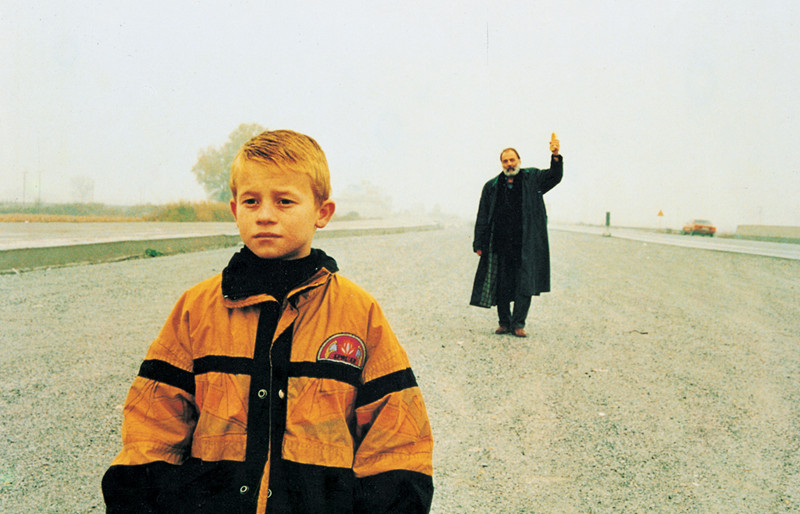
Theo Angelopoulos’s stories sail through the seas of time, and so does his cinematography. Among his time-traveling films, the poetic melancholy of “Eternity and a Day” spins outside of its temporal frame in an almost constant movement. Mainly shooting with a mobile camera, the great Greek director indicates the plot’s lines and drifts the viewer into his protagonist’s mental ambulation as well.
As the title suggests, the film captures a setting’s eternal existence in just one day. This day consists of the protagonist’s last moments on earth. Being affected by his certain forthcoming demise, lonesome writer Alexandros attempts an overview of his life as it was actually experienced. Nevertheless, his mind’s fleeing into a shelter of memories reveals a step on the delicate transparent surface that connects the present and the past.
In general, a lot of long-lasting static shots appear in Angelopoulos’s filmography, sometimes highlighting unspoken dramatic circumstances and sometimes disregarding the effect of time.
“Eternity and a Day,” however, is constructed by a total of single takes and sequence shots (less than five static shots appear in the entire film) reflecting on the hero’s mental state and movement, while they serve functional scopes in a smaller degree. Arguably, the use of camera here creates a highly influential result in terms of storytelling and visual synthesis.
2. The Passenger (1975)
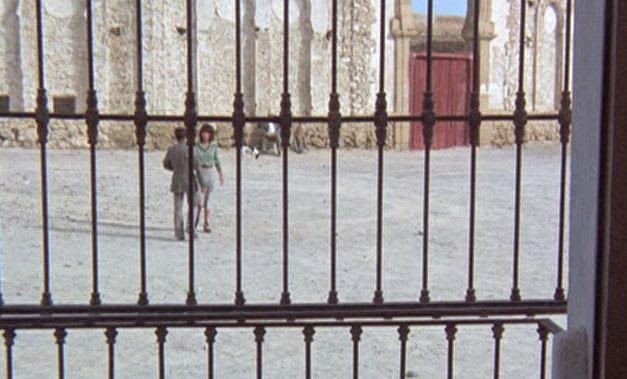
One of the most philosophical films of all-time, Michelangelo Antonioni’s “The Passenger” observes the silently lamenting, deserted existence of a disoriented man through a steadily fluid and painfully depictive cinematic move.
We meet David Locke in a desert of North Africa, where he finds himself worn out by the vacant austerity of the inalienable landscape. He’s an American journalist who’s supposed to complete a documentary about an African tribe, and instead, he hides the remnants of a torturing life in a fake identity, chasing an esoteric hideaway in the endless paths of this earth.
Brilliantly incarnated by Jack Nicholson, the story’s distracted journalist is found on the interface of a cosmic and a spiritual desert. He represents a floating grain of mind that searches for an identity in the murky vacancy of the eternal time.
Exposing the most agonizing aspects of an existential theorization, Antonioni paints Locke’s dreary portrait using the darkest shades of a soul. His soundless wail in emptiness, as it emerges in the wilderness of “The Passenger,” engenders an echoing grief in one’s mind.
The cognitive navigation in the picture’s idealistic landscape is smoothly accomplished due to Antonioni’s exceptional camerawork. The movements are so well-studied that manage to portray every sentiment, idea, distraction, and gap that occupies Locke’s head. His outstanding cinematography glorifies the complex thematic bedrock, exceeding the strict expositional trends. Finally, the picture is completed with one of the most striking and technically demanding single shots in cinema history.
1. The Conformist (1970)
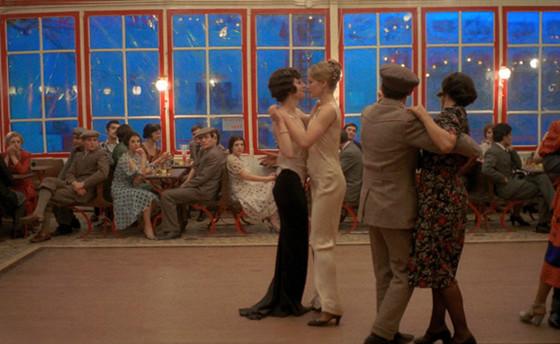
Bernardo Bertolucci’s orgy of colors, motions and ideas, as it glows on the visual aspects of his 1970 masterpiece “The Conformist,” provides an unforgettable feast for the eyes just since the first glance. Being absolutely flawless in terms of cinematography, this magnificent piece of the seventh art comprises an excellent textbook of filmmaking.
In its disturbing bravery, the both personal and socio-political fundament of “The Conformist” is methodically constructed by Bertolucci, who creates a visual poem about the overbearing obscurantism that carved indelible words on some scratched pages of this world’s diary. The plot artfully involves idealistic and societal parameters that reflect on the same idol of sentimental decay and moral vagueness.
As for the picture’s cinematography, it’s so stunning that very often a frame’s beauty drags the attention from the context behind it. From the color synthesis to the occurrence of shadows, and from the expressive, full of meaning close-ups to the well-crafted Mise-en-scene, the film reaches the highest mountaintop of aesthetic entrancement. Still, the parameter of camera movement is of great significance, being observant of mental state, introducing character-setting relationships, and serving the story’s grim overtone.